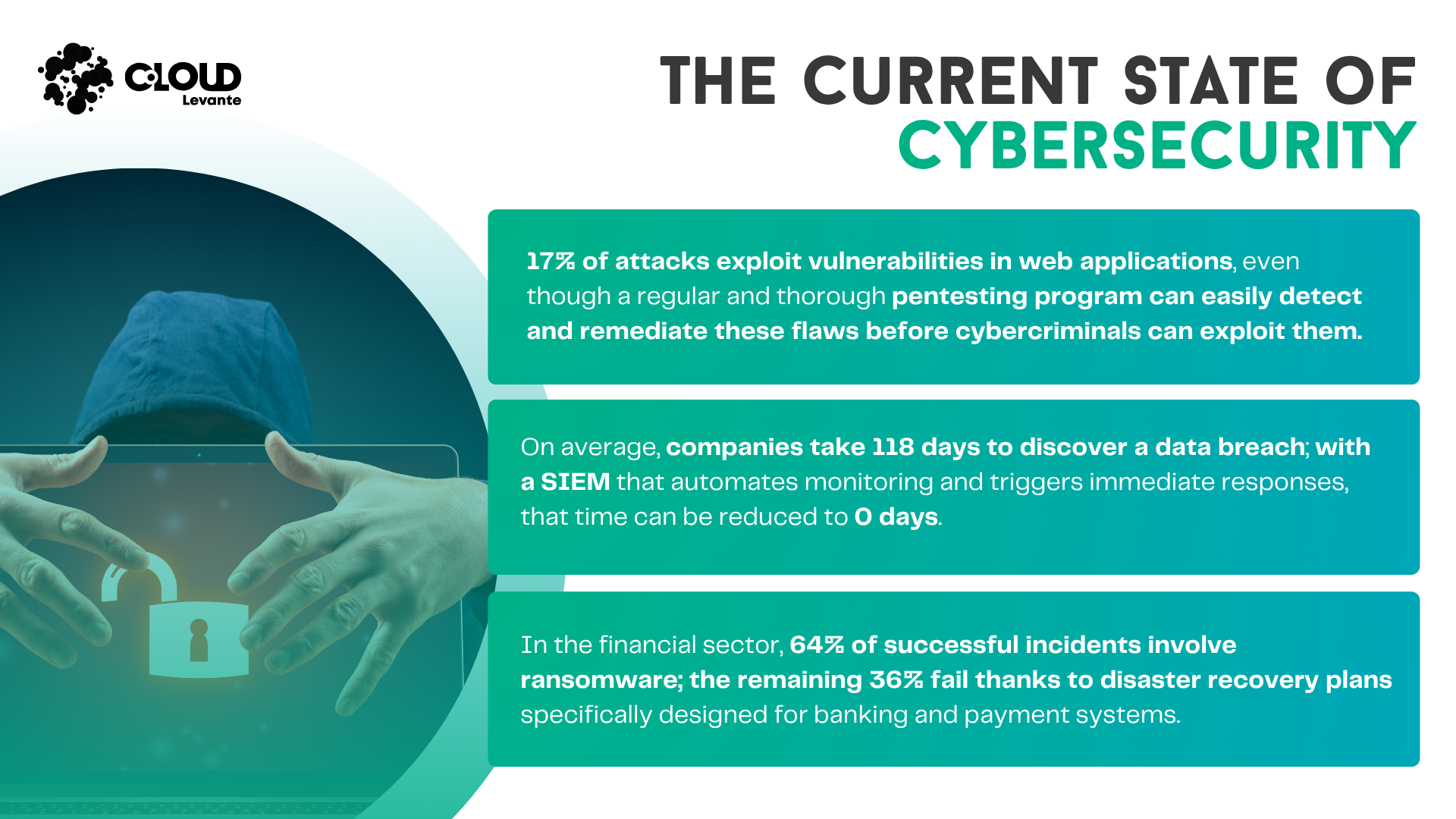What’s Happening in Cybersecurity? Key Statistics to Act on Today
Cybersecurity is an ongoing process: new attack techniques emerge every day, and even with a solid plan in place, it’s easy to become “disconnected” from the threats lurking around you. The report ‚130 Cyber Security Statistics: 2024 Trends and Data‘ from Terranova Security (Fortra) provides an in-depth look at today’s challenges and reminds us why it’s crucial to strengthen our habits and resources.

Rising Attacks and Main Vectors
More than 75% of targeted cyberattacks begin with email, cementing phishing as the primary gateway for malware and scams.
In Q2 2024, organizations experienced an average of 1,636 attacks per week—a 30% year-over-year increase.
17% of attacks still exploit vulnerabilities in web applications, making continuous code review and patching essential.
The average time to detect a data breach is 118 days, revealing significant gaps in early detection capabilities.
Resources, Budgets, and Corporate Culture
Cybersecurity budgets have grown from 0.53% to 0.80% of total corporate revenue—a 51% increase—yet 30% of executives still consider this insufficient for proper protection.
Only 29% of companies have implemented multi-factor authentication (MFA), despite the 118-day average breach detection time.
63% of organizations expect to increase their security budget over the next year, and 46% test their incident-response plan quarterly to improve reaction times.
The Human Factor: Primary Vulnerability
95% of data breaches are attributed to human error: reused passwords, easily guessed passphrases, or credentials written on exposed notes.
53% of users haven’t changed their password in the past year, and 57% write it down on physical media (paper, diaries).
44% recycle passwords between personal and professional accounts, and 62% have shared credentials via email or messaging, exponentially increasing incident risk.
Key Sector-Specific Statistics
Education: In Q1 2024, academic institutions faced an average of 2,507 attacks per week; 66% were affected by ransomware, with an average recovery cost of $1.42 million after a data hijacking.
Healthcare: The average cost of a breach reached $10.10 million—a 9.4% increase over the previous year. Nearly 60% of hospital administrators feel ill-prepared to manage a cyber incident.
Finance: The banking sector faces the highest average breach cost at $5.85 million. 64% of successful attacks in this industry use ransomware, and only 13% of employees have control over more than half of sensitive files.
Cybersecurity is a continuous journey that relies on adequate investment, ongoing training, and the adoption of good practices. With increasingly sophisticated attacks targeting strategic sectors, strengthening awareness and enhancing defense mechanisms—from MFA to tabletop exercises and penetration testing—is essential to reduce detection times, minimize impact, and prevent a single oversight from jeopardizing our information.
